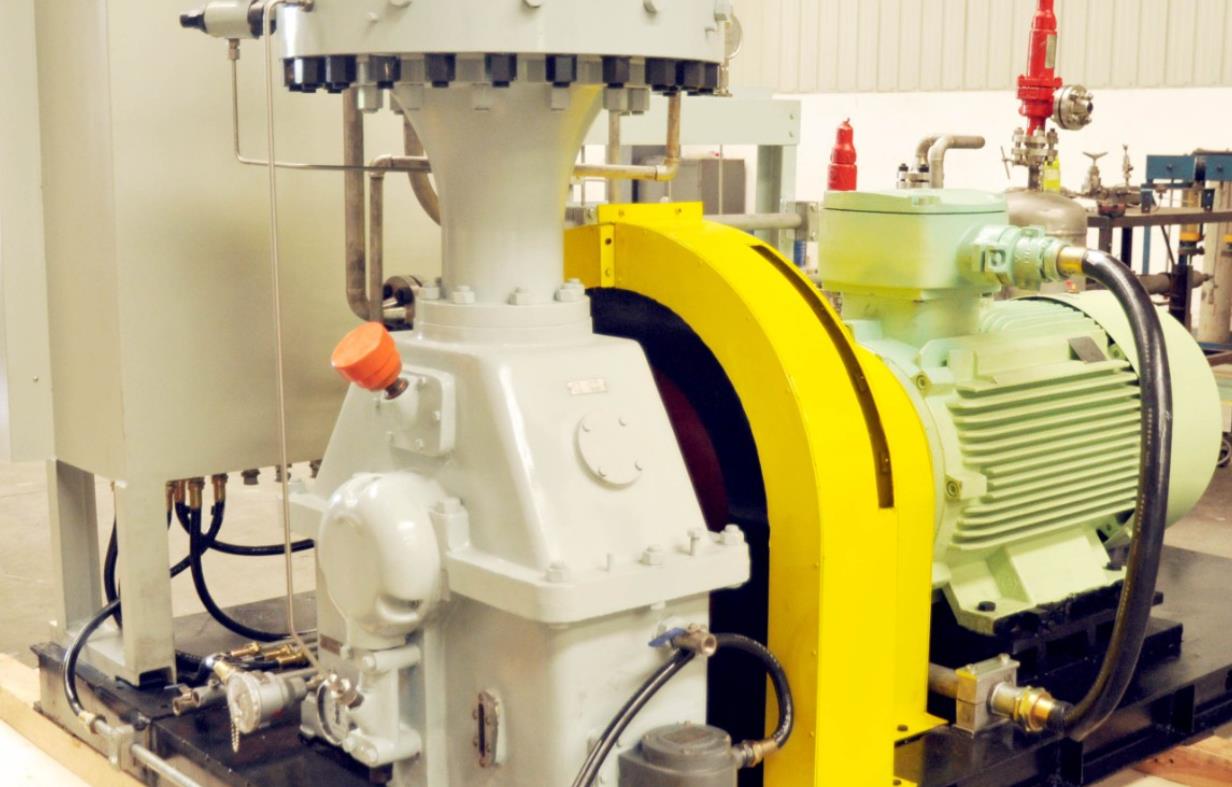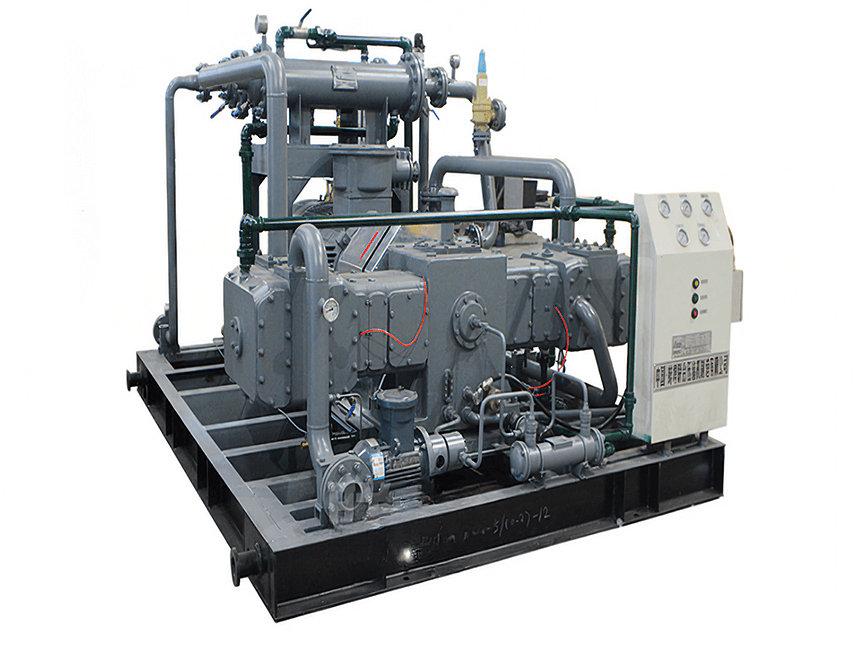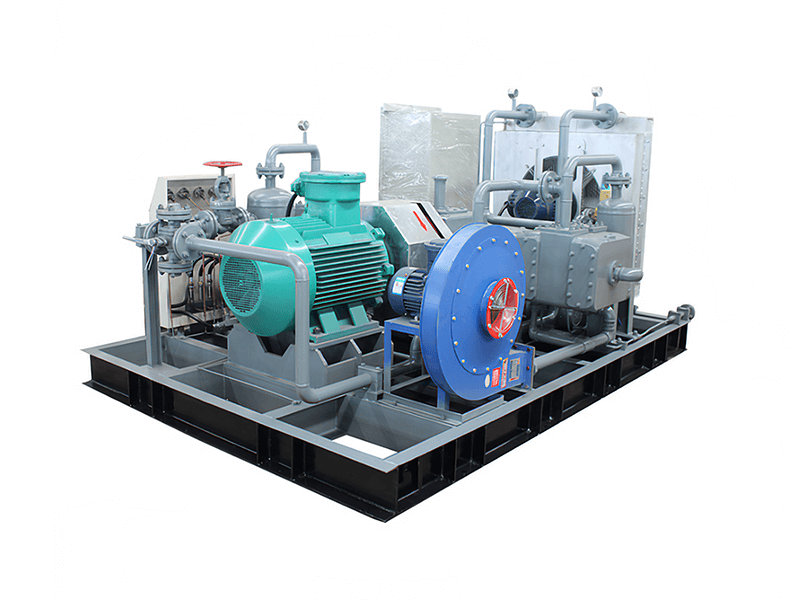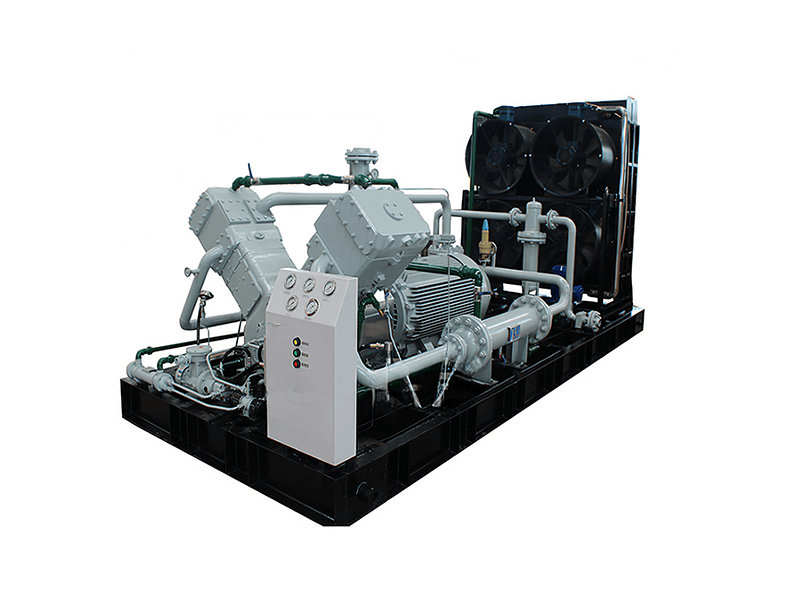Ammonia compressors are used in various industrial applications, especially in refrigeration systems. Here are the working principles of different types of ammonia compressors commonly used:
1. Reciprocating Ammonia Compressors:
Working Principle: Reciprocating compressors use a piston-cylinder arrangement to compress ammonia gas. The piston moves back and forth inside the cylinder, creating a vacuum during the intake stroke and compressing the ammonia gas during the compression stroke.
Process: As the piston moves downwards (intake stroke), ammonia gas is drawn into the cylinder. When the piston moves upwards (compression stroke), the gas is compressed and discharged at high pressure.
Application: Reciprocating compressors are used in medium to large-scale refrigeration systems where precise control over cooling capacity is required.
2. Rotary Screw Ammonia Compressors:
Working Principle: Rotary screw compressors use two rotating helical screws to compress ammonia gas. The intermeshing screws trap the gas and progressively reduce the volume, leading to compression.
Process: As the screws rotate, they draw in ammonia gas, compress it as the volume between the screws decreases, and then discharge it at high pressure.
Application: Rotary screw compressors are commonly used in large industrial refrigeration systems due to their high efficiency and continuous operation capabilities.
3. Centrifugal Ammonia Compressors:
Working Principle: Centrifugal compressors use a rotating impeller to impart kinetic energy to the ammonia gas. This kinetic energy is converted to pressure energy in a diffuser, resulting in compressed gas.
Process: The impeller rotates at high speeds, drawing in ammonia gas and accelerating it. The gas then enters a diffuser where its velocity is reduced, converting kinetic energy into pressure energy.
Application: Centrifugal compressors are often used in large-scale industrial refrigeration systems where high flow rates and energy efficiency are essential.
4. Scroll Ammonia Compressors:
Working Principle: Scroll compressors use two interleaving spiral scrolls to compress ammonia gas. One scroll remains stationary while the other orbits, trapping and compressing the gas.
Process: As the orbiting scroll moves, it reduces the volume between the scrolls, compressing the ammonia gas and discharging it at high pressure.
Application: Scroll compressors are commonly used in small to medium-sized refrigeration systems due to their compact size, quiet operation, and low maintenance requirements.
Each type of ammonia compressor has its unique working principle and is selected based on factors such as system size, capacity requirements, efficiency, and application-specific needs in industrial refrigeration and air conditioning systems.

Here is a comparison of the advantages and disadvantages of different types of ammonia compressors commonly used in industrial applications:
1. Reciprocating Ammonia Compressors:
Advantages:
Suitable for a wide range of capacities.
Can handle high-pressure differentials.
Efficient at part-load operation.
Good for applications requiring precise control.
Disadvantages:
Prone to vibration and noise.
Higher maintenance requirements compared to other types.
Limited to medium to large-scale applications.
2. Rotary Screw Ammonia Compressors:
Advantages:
Compact design with high efficiency.
Continuous operation capability.
Low vibration and noise levels.
Suitable for medium to large-scale applications.
Disadvantages:
Limited turndown capacity.
Higher initial cost compared to reciprocating compressors.
Requires proper maintenance to prevent oil carryover.
3. Centrifugal Ammonia Compressors:
Advantages:
High flow rates and energy efficiency.
Suitable for large-scale applications.
Low vibration and noise levels.
Long maintenance intervals.
Disadvantages:
Higher initial cost and complexity.
Limited turndown ratio compared to other types.
Requires specific expertise for installation and maintenance.
4. Scroll Ammonia Compressors:
Advantages:
Compact size and lightweight.
Quiet operation with low vibration levels.
High efficiency and reliability.
Suitable for small to medium-scale applications.
Disadvantages:
Limited capacity range.
Limited to low to medium pressure applications.
Higher initial cost compared to reciprocating compressors.
When selecting an ammonia compressor for a specific application, it is essential to consider factors such as capacity requirements, energy efficiency, maintenance needs, initial cost, noise levels, and system size. Each type of compressor has its own set of advantages and disadvantages, and the choice should be based on the specific requirements and constraints of the industrial application.


























